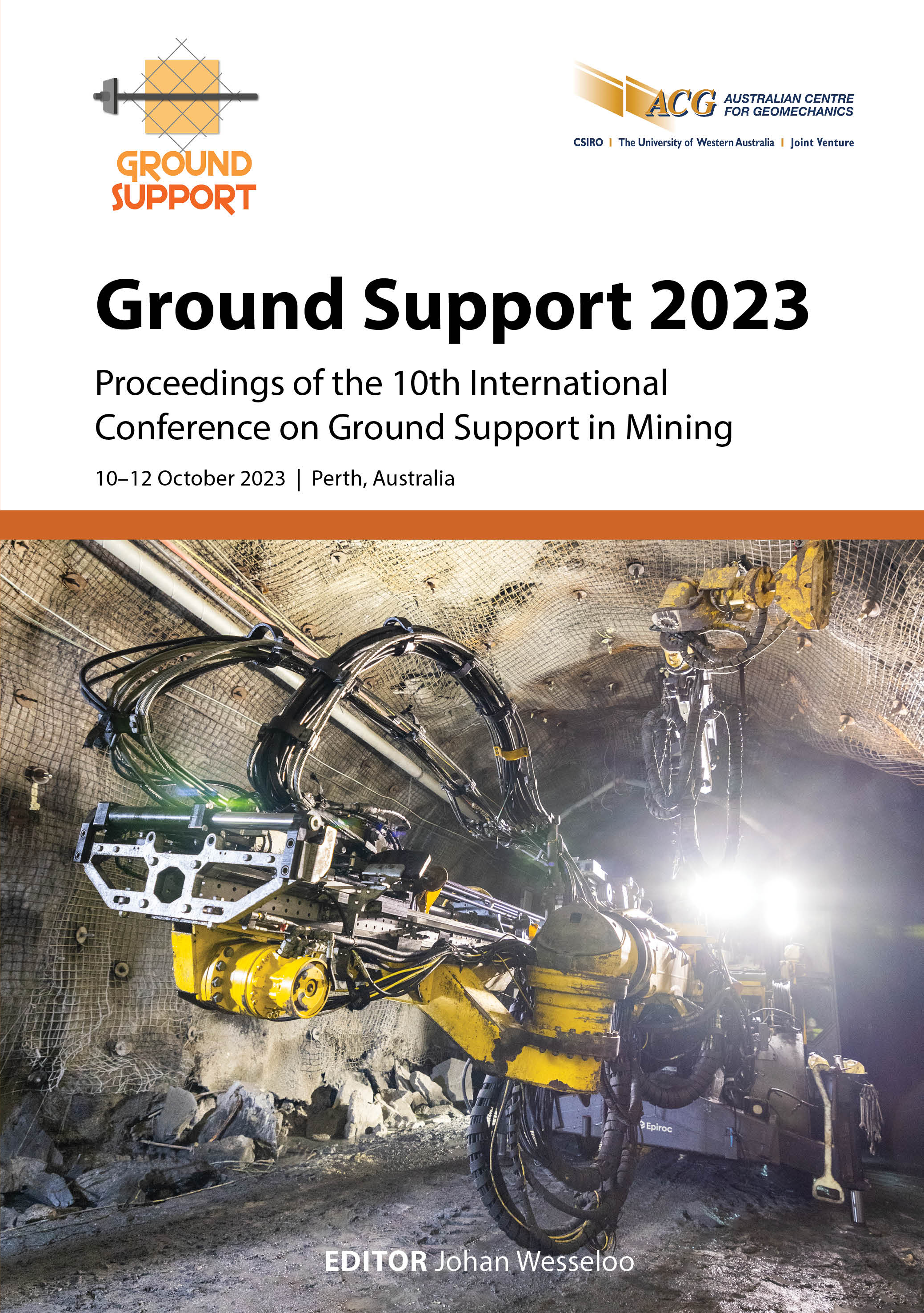Estimate of ground support response under dynamic loads at El Teniente mine, Codelco, Chile

|
Authors: Celis, MS; Parraguez, RA |
DOI https://doi.org/10.36487/ACG_repo/2325_06
Cite As:
Celis, MS & Parraguez, RA 2023, 'Estimate of ground support response under dynamic loads at El Teniente mine, Codelco, Chile', in J Wesseloo (ed.), Ground Support 2023: Proceedings of the 10th International Conference on Ground Support in Mining, Australian Centre for Geomechanics, Perth, pp. 101-114, https://doi.org/10.36487/ACG_repo/2325_06
Abstract:
The dynamic loads associated with the occurrence of seismic events in primary rock mass resulting from caving exist throughout the service life of the drifts, sometimes damaging the ground support system. To estimate the ground support response under dynamics loads, a Factor of Safety (FS) is estimated analytically that seeks to characterise these dynamic loads in terms of ejection velocities and thickness of damage, while quantifying the energy dissipation capacity of the ground support systems, finally making with these values an energy balance. Through field back-analysis, it is sought to characterise these dynamic loads in terms of ejection velocities and damage depth. To complete the analysis, over time it has been sought to quantify the energy dissipation capacity of the ground support systems and thus be able to represent numerically, estimating a FS with an energy balance, the response of the installed support. It has not been easy to perform these analyses because the process of load transfer to the support and its response is a complex process that includes several assumptions and multiple variables, such as the rock mass failure mode, failure mode of reinforcement elements, anchoring and retention system. Today, to represent the response of the ground support systems, reproduction of the laboratory boundary and load conditions have been sought. The quality of the installation of the support system is also reviewed as a variable. This is a factor that in some cases has conditioned the response to this type of load. What is sought with this analysis is to empirically represent what was observed in the field, aiming to introduce improvements in ground support systems or requirements for new support elements. Some examples are presented where the response of the ground support has been estimated with field data, the limitations when doing the analysis, the improvements introduced in the current ground support systems (among others, reinforcement and retaining elements with greater energy dissipation capacity) and finally, the challenges to improve these evaluations are presented.
Keywords: ground support, dynamic load, support installation quality
References:
Celis, S 2020, Rockburst Investigation October 2020 Block 1 Esmeralda Sur Mine, Codelco internal report.
Constanzo, H, Parraguez, R & Balboa, S, Bustamante, J & Celis, S 2023, Causal analysis Rockburst February 2023 Pacífico Superior Mine, Codelco internal report.
Parraguez, R & Celis, S 2022, Conceptualization of the Support and Quality Unit of the Operational Geomechanics Superintendent, Codelco internal report.
Rojas, E, Muñoz, A & Celis, S 2015, Energy, Deformation and Corrosion in Support Elements and General Guidelines for Design Support, Codelco internal report.
Rojas, E, Parraguez, R, Díaz, J & Celis, S 2020, Lessons Learned at Pilar Norte Mine, Codelco internal report.
Van Sint Jan, M 2005, Analysis of the Behavior of the Fortification in the Rock Burst of August 30, 2005, Codelco internal report.
© Copyright 2026, Australian Centre for Geomechanics (ACG), The University of Western Australia. All rights reserved.
View copyright/legal information
Please direct any queries or error reports to repository-acg@uwa.edu.au
View copyright/legal information
Please direct any queries or error reports to repository-acg@uwa.edu.au
